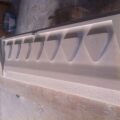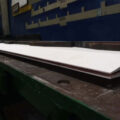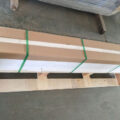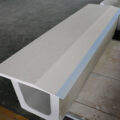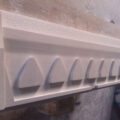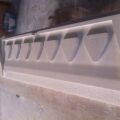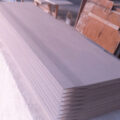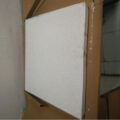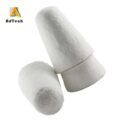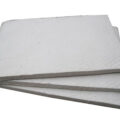For a casting nozzle made of a heat-resistant ceramic fiber material, depending on the composition of the metal to be continuously cast, the temperature of the molten alloy liquid varies in the cross-sectional width direction of the caster tip and nozzle arranged. On the movable mold side, the curing in the cross-sectional width direction of the material changes, which sometimes causes longitudinal cracks to occur. The cast alloy thus obtained must be subjected to surface treatment, such as machining. Therefore, ceramic fiber casting nozzle is desired to expand the narrow range of the metal composition capable of realizing the excellent surface quality of the cast alloy.
Ceramic fiber casting nozzle is made of a material with excellent thermal conductivity, heat conduction to the molten alloy liquid can be uniformly performed in the cross-sectional width direction. As a result of the nozzle, the molten alloy liquid supplied from the tip of the nozzle to the movable mold can be uniformly solidified due to a small temperature change, so that the occurrence of longitudinal cracks can be reduced, and the surface quality is excellent. Therefore, a high thermal conductivity layer is provided at the tip of the nozzle.

Ceramic fiber castertip has excellent strength and elastic deformability, is used to reduce the gap between the movable mold and the tip of the outer peripheral edge of the nozzle. The casting nozzle is fixed to a tundish for storing molten aluminum or alloy, and the molten metal is supplied from the tundish to the movable mold for continuous casting.
The casting nozzle made of ceramic fiber is arranged in such a way that the tip of the outer peripheral edge of the nozzle contacts the movable mold. And in some cases, the caster nozzle wears during casting due to strength. Although it is excellent in heat resistance and creates a gap between the tip and the movable mold, molten alloy liquid leaks from the gap, that is, so-called molten liquid leakage sometimes occurs. Therefore, before casting, an arrangement is made so that the gap between the movable mold and the tip of the outer peripheral edge of the nozzle can be as narrow as possible. However, in order to prevent leakage of the molten liquid, it is desirable to arrange before casting, so that the tip of the outer peripheral edge of the nozzle is in contact with the movable mold as much as possible.


